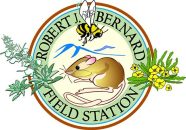Renden, Andrea (2002)
Microhabitat Preferences of Uta stansburiana (Side-Blotched Lizard): Implications for Microhabitat Enhancement of a Sagescrub Community.
Bachelor of Arts, Pomona College, Biology.
Advisor: Frances Hanzawa.
Essential microhabitat features were analyzed for Uta stansburiana in a sagescrub community. Five plots were surveyed including a rock outcrop with predominant Yerba Santa (Eriodictyon trichocalyx) coverage, a rock outcrop that was absent of Yerba Santa (Eriodictyon trichocalyx), a plot that was absent of rocks but predominantly covered by Yerba Santa (Eriodictyon trichocalyx), a plot that was absent of both rock outcrops and Yerba Santa (Eriodictyon trichocalyx) but predominantly covered by annual grasses a uniform distribution and was located a relatively long distance from the other plots, and a plot that was absent of rock outcrops and Yerba Santa (Eriodictyon trichocalyx) but predominantly covered by annual grasses and deer weed (Lotus scoparius) and located adjacent to two other plots. Visual surveys, pitfall trapping, and noosing were used as methods for estimating the number of individuals inhabiting each of the plots. The open plot containing deer weed (Lotus scoparius) was found to be significantly preferred as a microhabitat by U. stansburiana, while the rock outcrops were shown to be marginally significant for microhabitat preference. U. stansburiana had no significant preference for Yerba Santa (Eriodictyon trichocalyx). Release experiments supported a strong association of U. stansburiana with deer weed (Lotus scoparius) over Yerba Santa (E. trichocalyx). Rock outcrops were constructed on the open plots to determine if rocks could provide suitable microhabitat. Constructed rock outcrops were claimed as territories by male U. stansburiana, and results for the microhabitat enhancement experiment are suggestive that U. stansburiana would utilize constructed rock outcrops for colonization. This study assessed the importance of microhabitat features including rock outcrops and vegetation to determine if U. stansburiana showed a preference for specific microhabitats, which could be considered for preservation in the event of future development and human disturbance to maintain U. stansburiana populations.
